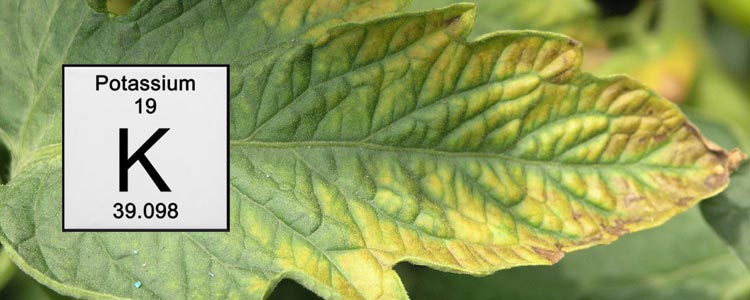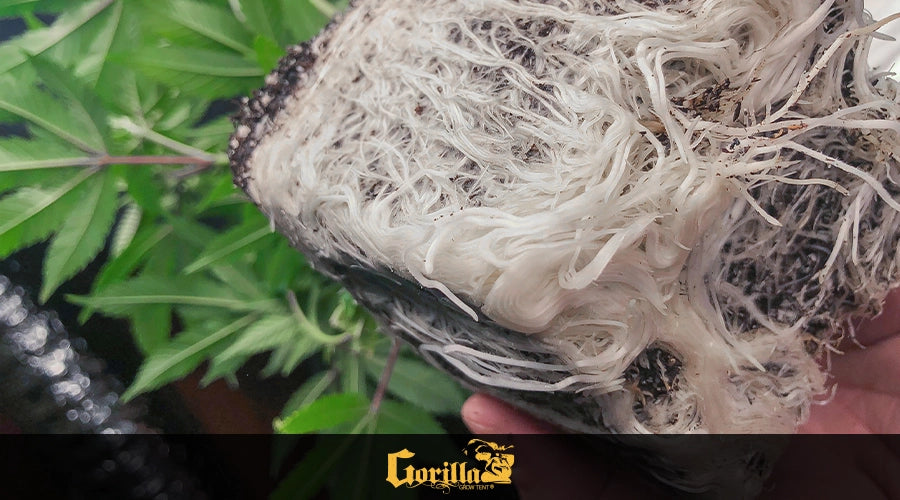
Potassium for Plants - Essential Nutrients for Growth
Potassium (K) is an essential macronutrient for plant growth and development. It plays a critical role in numerous physiological and biochemical processes, including enzyme activation, photosynthesis, osmoregulation, and protein synthesis. Potassium is often referred to as the "quality element" due to its significant impact on the quality of produce, including size, shape, color, and shelf life. This article explores the importance of potassium for plants, the symptoms of potassium deficiency, sources of potassium, and best practices for potassium fertilization.
Importance of Potassium for Plants
1. Enzyme Activation
Potassium is a vital activator of many enzymes involved in plant metabolism. Enzymes that rely on potassium include those responsible for carbohydrate metabolism, protein synthesis, and photosynthesis. For instance, the enzyme rubisco, which is crucial for carbon fixation during photosynthesis, requires potassium for optimal activity. Without sufficient potassium, these enzymes cannot function effectively, leading to reduced metabolic efficiency and stunted plant growth.
2. Photosynthesis
Photosynthesis is the process by which plants convert light energy into chemical energy stored in glucose. Potassium is essential for the functioning of the stomata, the tiny pores on the leaf surface that regulate gas exchange. Potassium ions help control the opening and closing of the stomata, thus regulating the intake of carbon dioxide (CO2) necessary for photosynthesis. Adequate potassium levels ensure that the stomata can open and close appropriately, optimizing CO2 uptake and reducing water loss through transpiration.
3. Osmoregulation
Osmoregulation is the process by which plants maintain water balance and turgor pressure within their cells. Potassium is a key player in this process, as it helps regulate the osmotic potential of plant cells. High concentrations of potassium in the cytoplasm and vacuole draw water into the cells, maintaining turgor pressure and preventing wilting. This is particularly important during periods of drought or high temperatures, as potassium helps plants withstand environmental stress by improving water use efficiency.
4. Protein Synthesis
Protein synthesis is another critical process influenced by potassium. Potassium is involved in the translation of messenger RNA (mRNA) into proteins, a fundamental step in protein biosynthesis. Additionally, potassium activates various enzymes required for amino acid synthesis, the building blocks of proteins. A deficiency in potassium can lead to reduced protein synthesis, negatively impacting plant growth and development.
Symptoms of Potassium DeficiencyPotassium deficiency can manifest in various ways, depending on the severity and duration of the deficiency. Common symptoms include:
- Chlorosis: Yellowing of leaf margins, particularly in older leaves, is a common sign of potassium deficiency. This is because potassium is a mobile nutrient and can be translocated from older leaves to younger ones when supplies are limited.
- Necrosis: As the deficiency progresses, the yellowed areas may turn brown and necrotic (dead). This typically starts at the leaf edges and tips and can spread inward.
- Weak Stems: Potassium-deficient plants often have weak, brittle stems that are more prone to lodging (falling over). This is due to the role of potassium in strengthening cell walls and maintaining structural integrity.
- Poor Root Development: A lack of potassium can lead to reduced root growth and development, limiting the plant's ability to absorb water and nutrients from the soil.
- Reduced Yield and Quality: Potassium deficiency can result in lower crop yields and inferior quality produce. Fruits and vegetables may be smaller, less colorful, and have shorter shelf lives.
Sources of Potassium for Plants
1. Soil Minerals
Potassium is naturally present in soil minerals such as feldspar and mica. Weathering of these minerals releases potassium ions into the soil solution, where they can be taken up by plant roots. However, the availability of potassium from soil minerals depends on factors such as soil pH, texture, and microbial activity.
2. Organic Matter
Organic matter, such as compost and manure, is an important source of potassium. As organic matter decomposes, potassium is released into the soil solution. Incorporating organic matter into the soil can improve soil structure, increase water-holding capacity, and enhance nutrient availability, including potassium.
3. Potassium Fertilizers
Potassium fertilizers are widely used to supplement soil potassium levels and ensure optimal plant growth. Common potassium fertilizers include:
- Potassium Chloride (KCl): Also known as muriate of potash, KCl is the most commonly used potassium fertilizer. It is highly soluble and provides a quick source of potassium, but its high chloride content can be detrimental to some crops.
- Potassium Sulfate (K2SO4): Also known as sulfate of potash, K2SO4 is a popular alternative to KCl, especially for chloride-sensitive crops. It provides both potassium and sulfur, an essential secondary nutrient.
- Potassium Nitrate (KNO3): This fertilizer provides both potassium and nitrogen, another essential macronutrient. It is particularly useful for crops with high nitrogen and potassium requirements.
- Potassium Magnesium Sulfate (K2SO4·2MgSO4): Also known as langbeinite, this fertilizer provides potassium, magnesium, and sulfur, making it a good option for soils deficient in these nutrients.
Best Practices for Potassium Fertilization
1. Soil Testing
Regular soil testing is essential to determine the existing potassium levels in the soil and to develop an appropriate fertilization plan. Soil tests can provide information on soil pH, texture, organic matter content, and nutrient levels, helping to identify potential deficiencies or imbalances.
2. Balanced Fertilization
Potassium should be applied as part of a balanced fertilization program that considers the plant's overall nutrient requirements. Excessive potassium application can lead to nutrient imbalances, such as reduced uptake of calcium and magnesium. It is important to apply potassium in conjunction with other essential nutrients to promote healthy plant growth.
3. Split Applications
Splitting potassium applications throughout the growing season can improve nutrient use efficiency and reduce the risk of leaching, particularly in sandy soils. This approach ensures a steady supply of potassium to the plants and minimizes nutrient losses.
4. Foliar Feeding
Foliar feeding involves applying potassium fertilizers directly to the leaves in the form of a spray. This method can provide a quick boost of potassium, especially during critical growth stages or when soil conditions limit nutrient uptake. However, foliar feeding should be used as a supplement to, not a replacement for, soil fertilization.
5. Crop Rotation and Cover Crops
Crop rotation and the use of cover crops can help improve soil fertility and reduce the risk of potassium depletion. Legumes, for example, can fix atmospheric nitrogen, enhancing soil nitrogen levels and reducing the need for nitrogen fertilizers. Deep-rooted cover crops can also help mine potassium from deeper soil layers and make it available to subsequent crops.
Conclusion
Potassium is a crucial nutrient for plant growth and development, playing a vital role in enzyme activation, photosynthesis, osmoregulation, and protein synthesis. A deficiency in potassium can lead to various symptoms, including chlorosis, necrosis, weak stems, poor root development, and reduced yield and quality. To ensure adequate potassium levels, it is important to utilize sources such as soil minerals, organic matter, and potassium fertilizers. Implementing best practices for potassium fertilization, such as soil testing, balanced fertilization, split applications, foliar feeding, and crop rotation, can help optimize plant health and productivity. By understanding the importance of potassium and managing its availability, farmers and gardeners can promote robust plant growth and achieve higher-quality produce.


